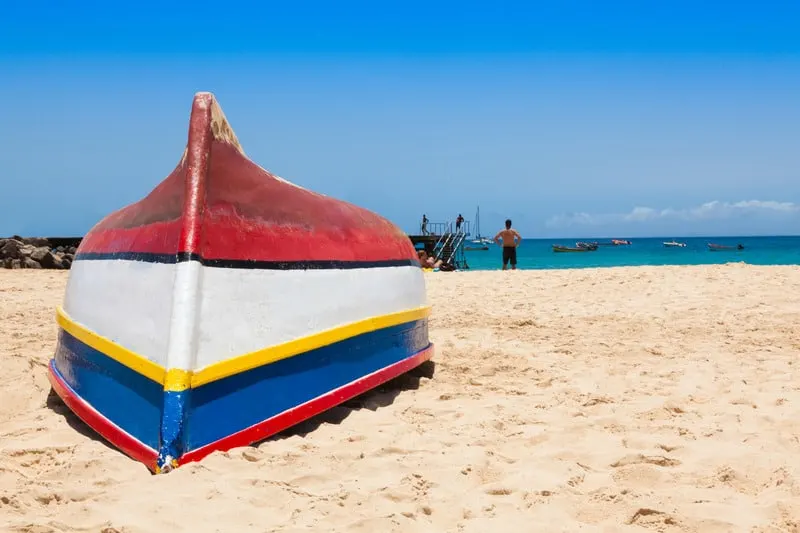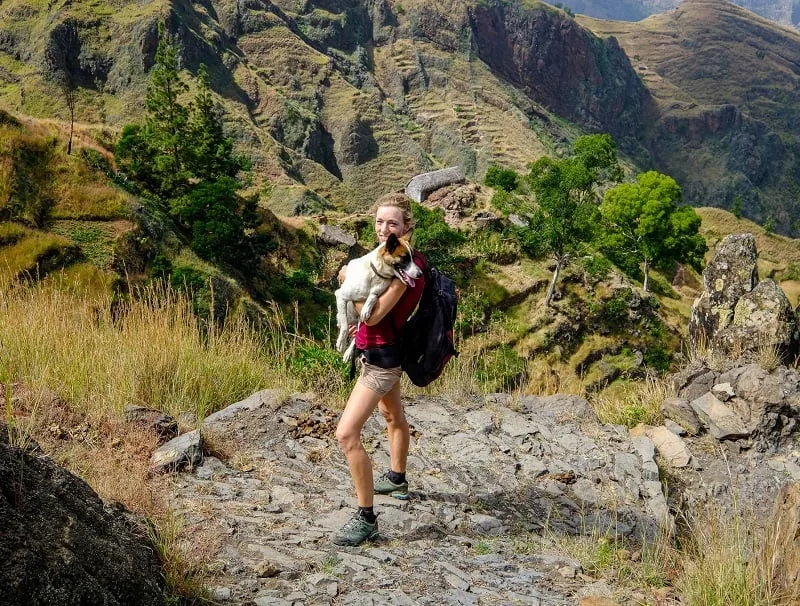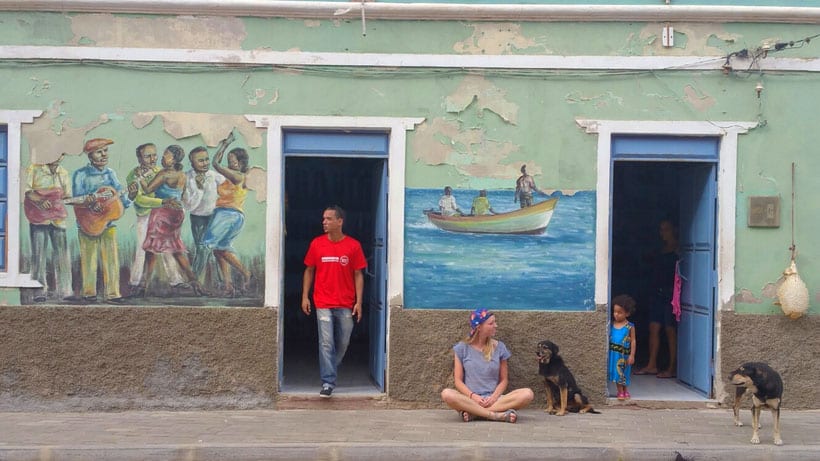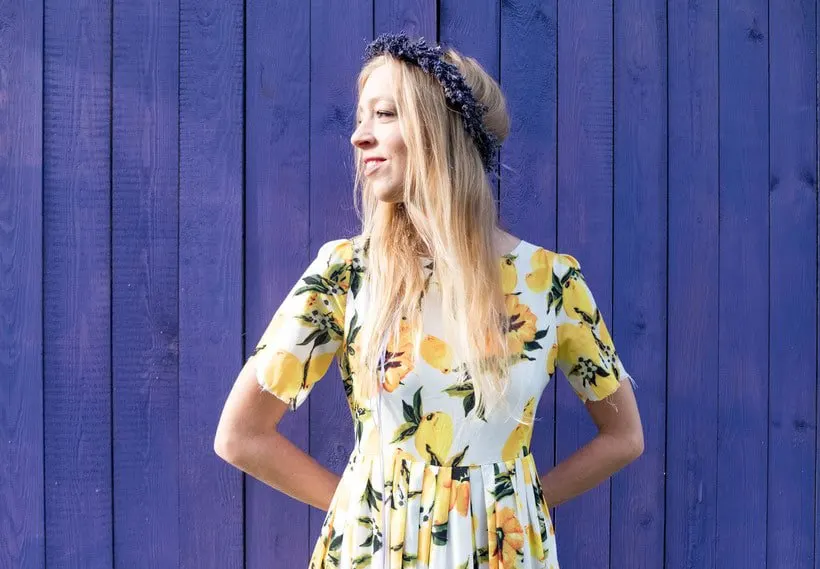A guide with useful phrases and expressions in Cape Verdean Creole, the Cape Verde language
Welcome to the beautiful archipelago of Cape Verde!
This group of volcanic islands boasts a unique culture, and if you’re planning a trip to any of the nine major islands that make up this country in Africa.
Learning a few common Creole phrases is an absolute must.
Not only will it show respect for the local people while you travel Cape Verde.
But speaking the language—or at least attempting to—opens up amazing opportunities for a deeper connection with locals.
Join me on this journey through Cape Verdean Creole and learn some helpful basic phrases guaranteed to make your travels easier and more enjoyable!

Pssst…!!?? You can’t get enough of Cape Verde? Have a look at my other posts about Cabo Verde:
- Best Beaches in Cape Verde
- Sustainable Holidays in Cape Verde
- Photos That Inspire To Visit Cape Verde
Table of Contents
Top Resources to Travel Cape Verde
⚘ Don’t leave without a travel guide. Be prepared and get the Ultimate Cape Verde Travel Guide Book
✈ Book cheap flights to Cape Verde with Skyscanner
✔ Book the best tours in Cape Verde with GetYourGuide
➳ Find the best hotel deals in Cape Verde with Trivago
❖ Get the best car rental deals with DiscoverCars
☘ Get the best discounted outdoor gear (outlet) at REI.com
✎ Never leave without travel insurance. I get mine at HeyMondo. It’s easy to set up, cheap, and reliable.✔ Skip the queue at the airport and get your Cape Verde visa in advance with iVisa
$ Withdraw money without hidden fees and avoid rubbish exchange rates with Wise (You’ll get a card for free!)
1. Tud Dret?

When you walk in the streets of Mindelo or on the windy roads of Santo Antao, people will ask you all the time: “Tud dret?”.
It generally comes with a thumbs-up move and a big positive smile, incorporating the friendly Cape Verdean slang into everyday interactions.
It can be freely translated by “Everything all right?” and is used in all kinds of situations.
I ended up asking “Tud dret?” to almost everybody I crossed in the street! Just like most Cape Verdeans do.
A variation of “Tud dret?” is “Tud Fixe?” (pronounced: “Tud fiche“). This will come in very handy when you go shopping for Cape Verde souvenirs.
Check Mindelo, Cape Verde tours now.
2. Sab pa fronte!

This is the best answer you can give to “Tud dret?” “Sap!” in Creole means “Cool!”
If you’re being asked your opinion on something or just how you’re feeling, “Sap!” is the most authentic way to answer.
“Sap pa fronte!” is a comparison of “Sap!” and lets everybody know that you’re feeling fabulous or that you like something very much.
I used “Sap pa fronte!” almost every day. Either when I was asked how I was doing or if I was enjoying Cape Verde. “Sap pa fronte!”. “Of course I did!”
Therefore, it can be very handy if you spend winter holidays in Cape Verde.
Please note that this expression is mostly used in Sal, Sao Vicente, and Santo Antao.
Check Sal, Cape Verde tours here.
3. Sebim

Food plays a very important role in Cape Verde! Especially when it comes to bafas (the Cape Verdean version of tapas), the matter is very serious!
Most bafas come from the sea: moreia (fried moray), buzios (shell entrails), lapas (limpets), cod croquettes, etc.
Each is more delicious than the other and the perfect match for your cold beer!
If the waiter asks you if you’re enjoying your meal, a determined “Sebim!” is the best way to answer! It can be freely translated by “It tastes good!”.
It’s always good to know how to make a cook happy! Especially in his own language!
In the Southern Islands, “Sebim!” becomes often “Sabim!”.
I used it A LOT when I went island hopping in Cape Verde.
4. Cachupa

Let’s stick to the food from Cape Verde (my favorite topic!). For those who love to travel culinary (like me), cachupa is a must-try when you visit Cape Verde.
The national dish of the archipelago can be eaten for breakfast, lunch, or dinner. Anytime is cachupa time!
Cachupa needs to be cooked for several hours on an open fire. Some say that’s the reason why on several islands, almost no trees are left! Hearty food lovers will enjoy it!
The stew consists of corn, beans, and sweet potato slices. Optionally, tuna or pork meat can be added.
It is usually served with a fried egg on top and a linguica (spicy sausage). Cachupa is normally the cheapest dish on the menu and will keep you satiated for hours!
And “sebim!”. “It tastes great!”.
5. Aluguer

In Cape Verde, you don’t catch a bus to get to your destination, but you get there by aluguer or collective.
Aluguers usually consist of vans with up to 15 seats… which doesn’t necessarily limit them to 15 people!
Apparently, the Cape Verdeans love to travel “closely together.” Don’t be surprised if you’ll be asked to take a kid on your lap!
Aluguers don’t run according to a schedule. They depart when nobody else can fit in (literally!).
Since waiting for the last person to fit in can take up to one hour, you better choose an aluguer that is already mostly fully charged.
Drivers sometimes ask you if you want to get to your destination by “taxi.” This means you’ll travel alone in the van, but the price will increase tenfold (not exaggerating!).
If you prefer the more economical version, just insist on traveling by aluguer or colectivo. And, oh magic, the price will decrease!
In the Southern Islands, a colectivo is also known as “yas.” It is one of the best things to do on Maio, Cape Verde.
Check Cape Verde hotels online.
6. Ponche & grogue

You can’t leave Cape Verde without having tried its national drinks: grogue and ponche! Grogue is made out of distilled sugar cane and can have up to 40% of alcohol!
Grogue is the basis of ponche, which includes molasses, lime, and fruit. Ponche can be compared to liqueur and is much sweeter than grogue.
Some say that grogue can heal you from every evil! Be that a headache or a cold!
They can’t be so wrong about it since, after one grogue shot, you truly feel “disinfected” inside out! I loved to have grogue in my caipirinha.
Conversely, ponche is a real sweet treat! There are many kinds: coconut, honey, passion fruit (my favorite!), or tamarind. Just try them all and find your own favorite!
It was one of my favorite things to do in Praia, Cape Verde.
7. Morna

Cape Verde rhymes with music! You can hear music everywhere in the streets of Mindelo or in Sal. The archipelago’s most famous music style is called “morna.“
Cesaria Evora (worshiped as a goddess, especially in Mindelo!), exported morna to the world.
On the anniversary of her death, her family organizes a commemoration march through Mindelo and a concert in her honor.
The stage is set right next to the entrance of her former house and the A-list of Cape Verdean artists is performing on that evening.
I had the chance to see Baú, Fantcha and Tito Paris! All big names in the industry! They were singing on a couple of wooden planks, and only a few meters separated them from the public!
Morna is all about sodade, a mixture of nostalgia and melancholy.
In this way, morna can be compared to the Portuguese fado.
In Mindelo, you can listen to morna in almost every bar, but I recommend Casa da Morna and Livraria Nho Djunga to attend live concerts.
Without any doubt, it is one of the best things to do in Mindelo, Cape Verde.
8. Morabeza

Morabeza refers to the Cape Verdean concept of hospitality and the kindness of its people.
This embodies the spirit of “tud dret Cabo Verde” and inspiring heartwarming Cabo Verde quotes.
The term is synonymous with their relaxed and gentle way of welcoming strangers on the Capeverdean archipelago.
I felt the Capeverdean Morabeza the most when I was in Santo Antao. This place became one of my favorite spots on this planet!
People welcome you with a bright smile, and they transfer you a bit of their relaxed composure.
Everybody greets you on the street (“Tud dret?”), and some even offered me their houses to stay, or gave me to taste the ripe fruits of their gardens!
I felt very fortunate to experience the ominous Capeverdean Morabeza first-hand!
It made me feel at home, and it was the reason why I prolonged my stay there twice and did all the hikes in Santo Antao, Cape Verde.
When you go island hopping in Cape Verde, you’ll feel this sensation everywhere!
Check tours in Santo Antao here.
9. Oril Game

If you wander through the streets of Sao Filipe (Fogo)or Porto Ingles (Maio), you’ll always stumble upon a group of people playing the popular Oril game.
You’ll find them in bars or sitting on a bench in front of their house.
You’ll immediately recognize this strategic game that comes from the west coast of Africa and was brought to Cape Verde by the slaves during Portuguese colonialism.
The board consists of a wooden trunk with 12 openings. Every player has 24 green, small balls, called “olives” that have to be placed strategically in the wooden openings.
Seeing how people play Oriol in the streets is one of the best things to do in Cape Verde.
10. Kusas k ta fazi?

If you’re traveling to the beautiful islands of Cape Verde, you’ll want to know some Cape Verdean creole phrases.
One essential phrase is “Kusas k ta fazi?” which means “What are you doing?”
It’s a simple question that can help spark conversation and break the ice if you’re meeting someone new.
As with any language, practicing speaking the phrases will not only help you communicate more effectively.
But it will also show the locals that you’re interested in their culture and language.
11. Komo bu sta?

One useful Cabo Verde creole phrase is “Komo bu staba?” which means “How are you?”
Knowing this phrase can make it easy to strike up a conversation with locals and learn more about their culture.
Learning a few simple phrases can go a long way in making your trip more enjoyable and fulfilling.
So, why not take the time to learn some Cape Verdean Creole phrases for your next adventure?
It may just make all the difference!
12. Kondi si bu yam?

When planning a trip to Cape Verde, it’s always good to have a few phrases in your back pocket that will help you navigate the islands with ease.
And what better place to start than with “Kondi si bu yam?”
This simple Cape Verdean Creole phrase means “What is your name?” and is an excellent way to introduce yourself and start conversations with locals.
Learning a new language can be daunting, but it can also open up a world of possibilities and help you connect with the people and culture of the places you visit.
13. Mi fala Kriolu

As someone who has enjoyed traveling to Cape Verde, I can attest to the importance of learning a few key phrases in Cape Verdean Creole.
Trust me; it will make your trip all the more enjoyable and fulfilling!
One such phrase that will come in handy repeatedly is “mi fala Kriolu,” which means “I speak Creole.”
This phrase will impress the locals and help you communicate more clearly and effectively during your travels.
Check Cape Verde hotels online.
14. N ka ta komprende

One of the most useful phrases is “N ka ta komprende,” which means “I don’t understand.”
As someone who has traveled to Cape Verde numerous times, I can attest to the importance of communicating effectively with locals.
Take the time to learn some Cape Verdean Creole phrases before embarking on your journey, and you’ll be amazed at how much it enhances your travel experience.
15. Desculpe

You’re in a bustling market in Cape Verde, exploring the vibrant array of goods. Suddenly, you accidentally bump into someone.
What’s your immediate response? A warm smile and a gentle “desculpe,” of course! – a common Cape Verdean Creole words, expressing politeness and humility.
“Desculpe” is a courteous acknowledgment that expresses both politeness and humility, making it one of the essential Cape Verde Creole phrases.
It’s the word you use to convey that you didn’t intend to bother someone, whether you’ve accidentally bumped into them or you’re trying to get their attention.
It’s not just about asking for forgiveness; it’s about creating a moment of understanding, a sentiment that resonates within the cultural context of Creole Cape Verde.
Check now Cape Verde tours now.
16. Quanto custa?

Let’s explore the friendly and dynamic vibes behind “Quanto custa?” or “How much does it cost?”
It’s a common inquiry encapsulating Cape Verdean words used in everyday interactions.
The tone here is friendly, open, and dynamic – it’s not just a transactional question; it’s an opportunity to engage in a conversation.
You’re expressing genuine interest in the item and inviting the vendor to share a bit of their world with you.
In this casual encounter, “Quanto custa?” becomes more than a question; it’s an invitation to connect, using Cape Verdean phrases that go beyond the surface.
17. Onde fica…?

You’re exploring the enchanting streets of Cape Verde, and you come across a local cafe that seems to be buzzing with life.
Intrigued, you turn to a passerby with a warm smile and ask, “Onde fica o café?” (Where is the café?)
The beauty of “Onde fica…?” lies in its simplicity and the friendly connection it fosters.
As you inquire about the location of a café, a landmark, or a hidden gem, you’re not just seeking directions; you’re initiating a conversation.
18. Pode ajudar-me?

Let’s explore the friendly, open, and dynamic tone behind “Pode ajudar-me?” meaning “Can you help me?”
It’s a phrase that reflects the morabeza meaning, emphasizing warmth and hospitality in Cape Verde.
The tone in this phrase is inherently warm and inviting.
The word “pode” (Can) adds a touch of politeness and respect to the request, making it more than a transactional inquiry.
19. A conta, por favor

Imagine this scenario: You’ve just enjoyed a delightful meal at a cozy restaurant in Cape Verde.
Satisfied and content, you catch the eye of your server, and with a warm smile, you say, “A conta, por favor” – The bill, please.
The tone here is friendly and casual, reflecting the pleasant atmosphere you’ve experienced throughout your meal.
The inclusion of “por favor” (please) adds a touch of politeness, creating an open and inviting interaction.
It’s not a hurried request but rather a transition that keeps the friendly atmosphere intact.
Check Cape Verde hotels online.
My insider tip about Cape Verdean creole

Please note that these Cape Verde phrases in Creole can vary according to the place that you are visiting!
Indeed, the Northern Islands can speak a totally different Cape Verde Creole (or Kriol, Criollo, Creolle) than in the Southern Islands.
Do you think my list isn’t complete? Of course, it’s not!
The Creole of Cape Verde is such a rich language that I’m sure I haven’t mentioned all of the most typical expressions!
If you know about any other expression, please let me know in the comment form!
FAQs on Cape Verdean Creole
How to say thank you in Cape Verdean creole?
In Cape Verdean Creole, you can say “Obrigadu” to express thank you; on the other hand, the common expression “Amo bu” means I love you in Cape Verdean Creole.
How to say “how are you?” in Cape Verdean creole?
In Cape Verdean kriolu phrases, you can say “Kuza ki bo ta?” which translates to “How are you?”
How to say hello in Cape Verdean creole?
In Cape Verdean Creole, you can say “Bó dia, kumé ki sta?” which translates to “Good morning, how are you?”



Hola! I’m Paulina, a seasoned travelette who crossed the Atlantic Ocean by Boat HitchHiking. On my blog, find expert insights for an extraordinary holiday through outdoor and sustainable travel like hiking, cycling, and sailing. Let’s embark on unforgettable journeys together! 🌍🚀



Andrea Sanderson
Friday 30th of September 2022
Great blog! Thank you!
Paulina
Wednesday 5th of October 2022
Thank you dear!
Paul
Monday 16th of March 2020
You are breathtakingly gorgeous!! Beautiful!!!!!!!!!!!!!!!
Paulina
Monday 16th of March 2020
And how do you say that in Creole? jajaja :)